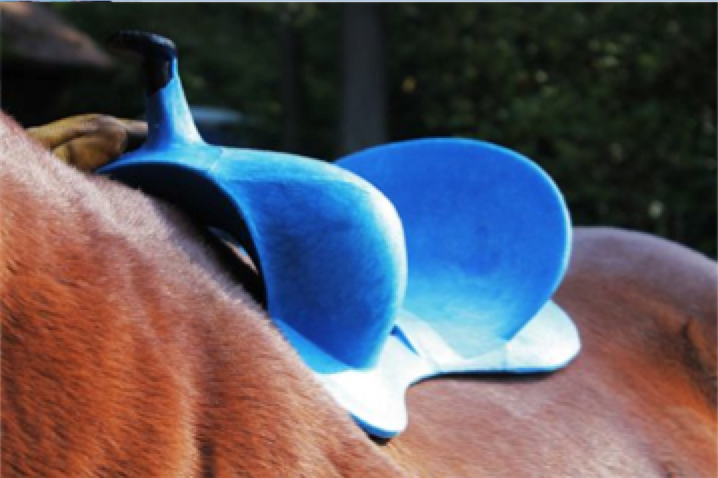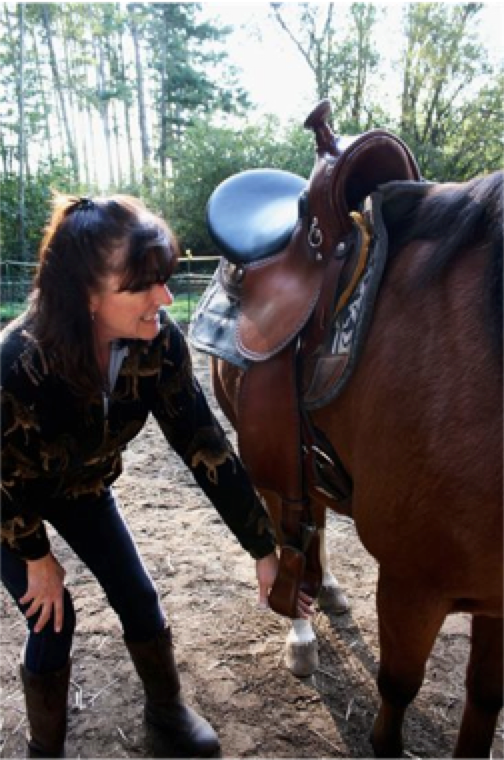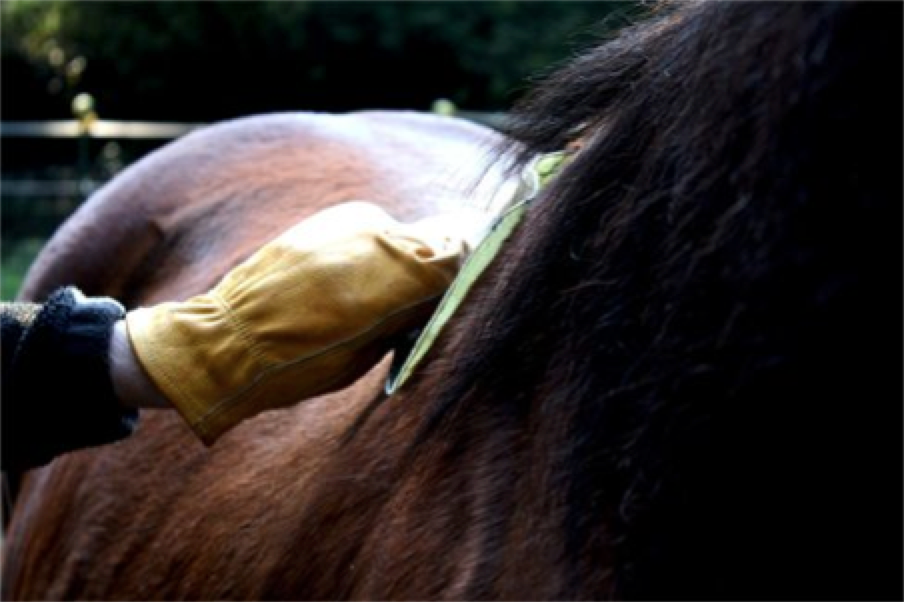A variety of saddle fitting techniques are available today. The most common way to fit or assess saddle fit is by doing a wither tracing. There are many websites that show how to take a wither tracing which may potentially work for your horse yet there are some points to consider. Most often a wither tracing will only tell you what won’t work. Even though the tracing may reveal a fit, you are inevitably looking at a trial and error situation which can be very time consuming, not to mention frustrating.
Searching the web and reading the wealth of information can be confusing. There is so much information! Much of the information we gather can even be conflicting. Hopefully we can clarify and resolve some confusion as you read on.
Size Does Matter
First, we will talk about the “tree” or the base the saddle is built on. You may encounter terms like “Full Quarter, Semi-Quarter, Quarter Horse, Draft, Arab, Gaited, Association, Mule, Wide, Regular, Narrow” etc. when describing a specific tree. These terms can lead us to assume a specific name of a tree is for a specific horse.
My first horse was a quarter horse and was told she should fit into a regular quarter horse tree. Ok. That’s easy. I bought a saddle from a local tack shop that was designed with Regular Quarter Horse bars. That saddle would not stay in place. I was constantly having to move the saddle forward and it kept slipping to the side when I tried to mount. Does this sound familiar? This is a very common problem when a saddle does not fit. This tolerant horse was trying to tell me … this doesn’t work!!!
Another dilemma, I received all kinds of advice from my fellow riders, friends, tack stores, etc. (I know they were just trying to help me, and I was desperate) I was told I needed a thicker pad, which would help pad against the areas that might be rubbing on the horse where it didn’t fit correctly. Trying nearly a 15 pound, inch-thick fleece pad sounded like a great idea. Right? It made sense, yet that only made things worse. The pad didn’t breathe at all and hung a good foot out the back and the saddle would actually push the pad back. These pads can work for some and I have seen success, yet it all boils down to saddle fit.
Imagine having purchased a pair of shoes that are too narrow yet a size bigger than you wear. Would you put a larger thicker sock on to make it fit better? Maybe a thick boot sock? Now envision wearing a boot sock with a shoe that is way too narrow. Let’s try that example with a 50 pound back pack for a 3 mile hike up the mountain. You wouldn’t get far before you would turn back and want to go bare foot for the trek back. Now imagine how your horse feels with that thick pad and saddle that doesn’t fit. The saddle needs to fit. Bottom line.
The purpose of the tree of the saddle is to disperse the rider’s weight across the horse’s back evenly. If the tree doesn’t fit, the rider’s weight will be dispersed only in the areas where the tree comes in contact with the horses back. Here is an extreme example, A really sway-backed horse that is ridden in a saddle that has no slope from front to back creating severe bridging. The tree of the saddle is only in contact with the horse in the front and the back. When you mount this horse, your total weight is divided to the front and the back areas where the saddle is in contact with the horse. Ouch!!! This will create a real problem. Bucking, rearing, bolting, biting, kicking and so very dangerous! Another indication of possible poor saddle fit is if your horse is not standing still while mounting or tacking up. If your horse is showing any of this behavior, check your saddle fit. I have seen horses with these behaviors totally disappear or change for the better once the saddle fit is corrected.
What’s in a Name?
Keep in mind, when considering the “name” on the tree of the saddle as each manufacturers tree will differ even though the name may be the same. “Crates” brand “Full Quarter” is totally different from “Tex Tans” “Full Quarter”. Don’t get stuck on the names a manufacturer labels a saddle to be. You want it to fit, not by name, but by the specific fit. Just because you have a Quarter Horse, it doesn’t mean a horse may not fit a “Gaited” or “Draft” tree.
A “Wide” tree can mean many different things. Think of the angle of your horse’s back as an A-frame. As the bottom of the A widens the A becomes flatter. A flatter A-frame would fit a flatter backed horse. Also, the front bars of the tree can flare out or come out straight which will add to assessing the fit.
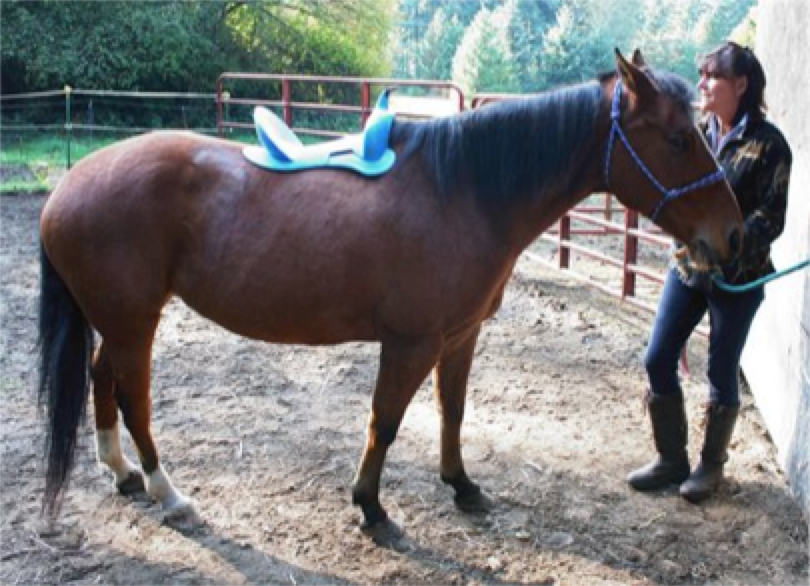
This is not a good fit for this horse. You can see gaping areas behind the shoulder. This particular tree has bars that come out fairly straight. You can see in the picture below, the shoulders of the horse would push this tree back when ridden and the tree would be tipping forward and raising in the back which would throw the rider totally off balance! Very difficult for a rider and horse to travel balanced in this situation. Note: You can not place a saddle on a horse in a balanced position if it does not fit. You will constantly have to re-position it.
A closer look shows this tree would dig into the shoulders. Pay attention to the pommel sitting on the withers of the horse. Add the weight of the rider and you have a real nightmare! Now you might say this is too wide. If you made the angle (A-frame) narrower it would lift that pommel, yet narrowing the angle would not help as this horse has huge shoulders. This horse is a very difficult fit. Her short back is another problem with fit. Most production line saddles are too long to accommodate a short backed horse.
The majority of our saddle fitting is done by the use of Steele Fit Forms, which have a wide array of forms that mirror various horse backs. You can see below, this form/tree would accommodate Mocha’s large shoulders. This particular tree flares in the front and there is good contact throughout the bar area of the tree. Here is where things get a little tricky. A gullet measurement is not going to tell whether a saddle will fit or not. Why? Even though a wide enough tree (which is shown here fitting this big shouldered horse) had bars that came out straight, you would have no contact on the back of the saddle even though the shoulders would be free.
How To Properly Use Shim Pads for Asymmetrical Horses
Many horses like Mocha are not symmetrical. She is more muscular on one side which means the tree will not have as much contact in the bar area on one side. The tree could be modified on one side, yet this is not suggested. The best suggestion would be to exercise the side that needs developing which will create more balance. Another option is to incorporate a shim pad. This would be an ideal situation for a shim pad.
Word of caution, NEVER use a shim pad to fix a saddle that does not fit. Shim pads are used to slightly fill in areas where the saddle is not in contact with the horses back. A shim pad would not help the saddle shown above that is slipping.
The Right Saddle Fit Can Make All the Difference
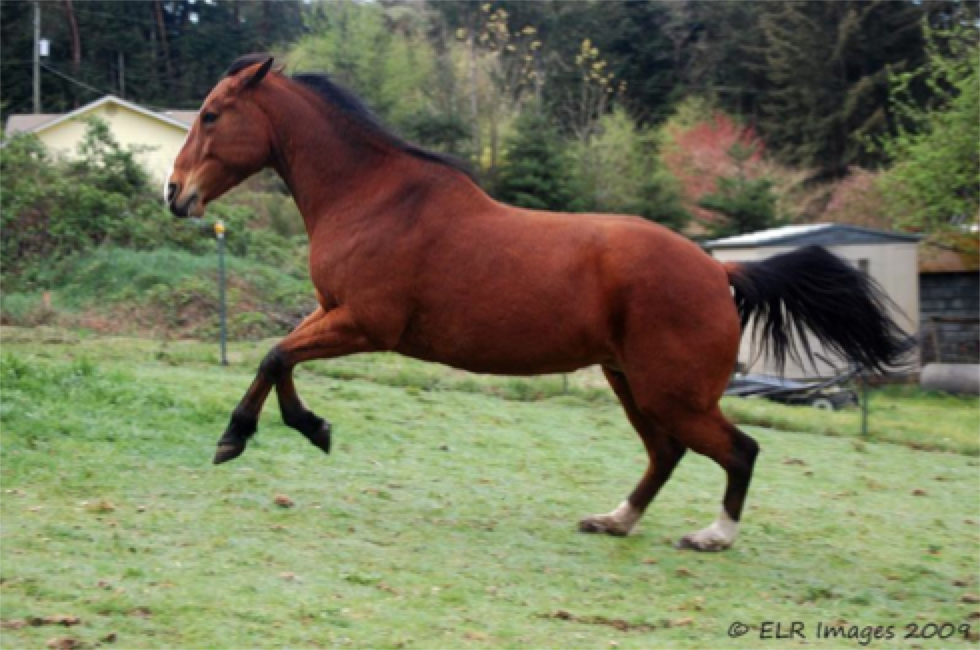
Once you get a correct fit for your horse, you will not believe how willing and forward your horse will become. You will see a totally different horse that is fluid moving and balanced. Both horse and rider benefit from a saddle that fits properly.
Make sure you rule out a poor saddle fit if this is in question. It is not worth ruining the trust bond. Trust is “key” to building a solid foundation and long lasting relationship with your horse. Happy trails!
~Pamela McNellis
Note: You can read more posts about saddle fitting here.





